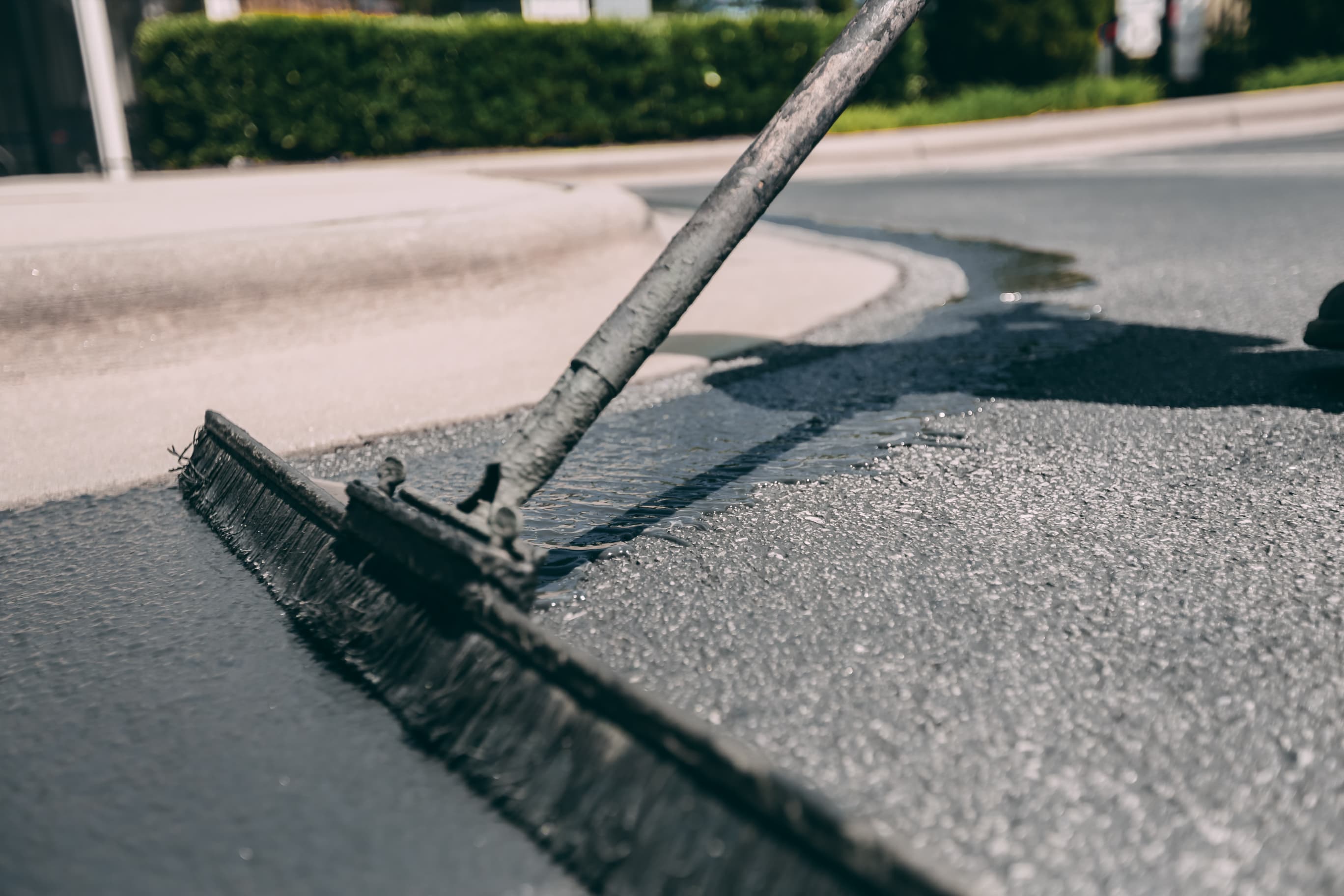Warm Mix Asphalt: A Sustainable Option for Sidewalk
Warm Mix Asphalt (HMA) has actually emerged as a leading lasting option for sidewalk remedies, using a myriad of environmental advantages and ingenious technologies. As the need for environmentally friendly construction techniques expands, checking out the subtleties of HMA's sustainability can offer beneficial understandings into the future of sidewalk solutions.
Ecological Benefits of Warm Mix Asphalt

In Addition, Hot Mix Asphalt aids to reduce city heat island results. Its dark color soaks up sunlight, lowering the amount of warm reflected back right into the ambience compared to lighter-colored sidewalks. This can decrease ambient temperatures in metropolitan locations, decreasing the need for cooling and eventually decreasing power intake.
Additionally, Warm Mix Asphalt contributes to enhanced stormwater administration. Its permeable nature permits water to recharge and infiltrate the pavement groundwater materials, decreasing drainage and the threat of flooding. These ecological advantages make Warm Mix Asphalt a lasting option for paving highways and roadways.
Power Performance in HMA Manufacturing
Is power performance a vital element in the manufacturing of Warm Mix Asphalt (HMA)? Absolutely. Energy plays a substantial duty in the production of HMA, affecting both expense and environmental sustainability. One essential element of energy efficiency in HMA manufacturing is the use of cozy mix asphalt (WMA) modern technologies (hot mix asphalt). WMA enables the blending and placement of asphalt at lower temperatures contrasted to traditional hot mix asphalt, resulting in reduced power intake throughout production. This process not only lowers gas usage but likewise reduces greenhouse gas discharges, making it a more environmentally pleasant alternative.
Moreover, developments in plant technologies have actually resulted in even more energy-efficient HMA manufacturing processes. Modern plants are made with functions like recycled asphalt pavement (RAP) handling capabilities, effective burner systems, and boosted insulation, all adding to power cost savings. By optimizing power usage in HMA manufacturing, the industry can lower its carbon footprint while keeping high-grade pavement products. Energy effectiveness is, therefore, an important consideration in making sure the sustainability of Hot Mix Asphalt production.
Recyclability of Warm Mix Asphalt
The recyclability of Warm Mix Asphalt (HMA) is a pivotal aspect of its sustainability and lasting ecological impact. HMA is among one of the most recycled products in the USA, with over visit site 100 million lots of redeemed asphalt pavement (RAP) being recycled yearly in brand-new pavement construction. Recycling HMA uses numerous ecological advantages, such as decreasing the requirement for virgin products, reducing power intake during manufacturing, and lowering the quantity of waste sent out to land fills.
The procedure of reusing HMA entails milling the existing pavement, crushing it right into smaller sized pieces, and blending it with brand-new accumulation and asphalt binder to develop a recycled mix. This recycled mix can usually carry out in addition to or even much better than traditional HMA, while needing less resources and creating lower greenhouse gas emissions. By incorporating RAP right into new sidewalk tasks, roadway firms can save natural deposits, decrease costs, and lessen the ecological impact read of roadway building and upkeep tasks. On the whole, the recyclability of HMA plays a significant function in promoting lasting methods within the sidewalk market.

Long-Term Performance of HMA
Asphalt pavements show resilience and strength over a prolonged period, reflecting the long-lasting efficiency of Hot Mix Asphalt (HMA) In addition, developments in HMA modern technology, such as the use of polymer-modified binders and warm mix asphalt, have actually even more boosted the resilience and durability of HMA pavements. By focusing on quality building and upkeep practices, HMA continues to confirm itself as a lasting and cost-effective remedy for lasting pavement framework.

HMA: Sturdiness and Sustainability
Demonstrating both durability and sustainability, Hot Mix Asphalt (HMA) has come to be a foundation in the construction of resilient sidewalk frameworks - regrading. HMA's resilience originates from its ability to site hold up against heavy loads, extreme weather problems, and high traffic volumes, making it a reliable option for streets, freeways, and airport runways. The make-up of HMA, which generally consists of accumulations, binder, and filler, plays an important duty in enhancing its durability and resistance to tear and wear
Additionally, HMA's sustainability depends on its recyclability and energy-efficient production process. The capability to recycle redeemed asphalt pavement (RAP) in new HMA blends decreases the need for virgin products and minimizes the environmental influence of pavement building and upkeep. In addition, the power efficiency of creating HMA exists in its lower blending temperature levels compared to other pavement materials, resulting in reduced power intake and greenhouse gas emissions.
Conclusion
In verdict, hot mix asphalt (HMA) supplies a lasting service for pavement with its eco friendly features. HMA's recyclability, energy effectiveness in production, and lasting toughness make it an environment-friendly option for road building.
HMA is one of the most recycled products in the United States, with over 100 million heaps of recovered asphalt sidewalk (RAP) being reused annually in new pavement construction.The procedure of recycling HMA entails milling the existing pavement, crushing it right into smaller sized pieces, and blending it with new aggregate and asphalt binder to develop a recycled mix.Asphalt pavements show sturdiness and resilience over a prolonged period, showing the long-term efficiency of Hot Mix Asphalt (HMA) Furthermore, innovations in HMA innovation, such as the usage of polymer-modified binders and warm mix asphalt, have actually further improved the resilience and longevity of HMA sidewalks. The ability to reuse redeemed asphalt pavement (RAP) in new HMA mixtures reduces the demand for virgin products and decreases the environmental influence of pavement building and construction and upkeep.